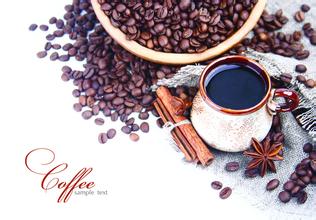Introduction to the price and taste of Liberian coffee beans
Liberica coffee, which usually grows on slopes about 200 meters above sea level, is not big, about 10 to 20 feet high. Lilika coffee is a kind of tree species with strong resistance to disease and environmental adaptability, so Liberica coffee can be grown in subtropics compared with other tree species. The most suitable temperature for growth is 19-27 ℃. Liberica coffee tree from the appearance, its leaves are larger than other coffee species, can be planted by grafting, taste bitterness is higher, aroma and mellow, but high concentration is its advantage.
In Malaysia, Liberica coffee adds some special spices to stir-fry beans to give the beans a different flavor. Coffee trees are flowering plants of the genus Rubiaceae. They range from small shrubs to 18-meter-tall trees. Wild coffee species grow irregularly in the tropics, and new species are still being discovered. Strictly speaking, only two major species of coffee are cultivated to produce coffee: Arabica coffee (Arabica) and Canifra coffee (English Canephora, often referred to as "Robusta coffee"). However, in order to meet the needs of domestic coffee consumption, a third species, Liberian coffee, has been planted in a small number of countries such as the Philippines.
Nearly 70% of the world's commercially grown coffee is Arabica coffee, with a total of 7 million tons of roasted coffee each year. Robusta coffee accounts for the rest of the market, mainly produced in Java, Sumatra and Vietnam in India, Indonesia and Vietnam, which contributes nearly half of the world's total production of Robusta coffee. It is the second largest coffee producer in the world after Brazil.
"Robusta" means strong and healthy, and as the name suggests, robusta coffee has better disease resistance than Arabica coffee. Part of the reason is that Robusta coffee has a higher caffeine content and has a stronger inhibitory effect on small pests. Robusta coffee is characterized by higher fruit yield per unit harvest period, and its ripe fruit can hang on trees for a long time, compared with Arabica coffee that falls to the ground if it is not harvested in time. Robusta coffee beans are smaller and thicker than Arabica beans, thicker but slightly less flavored. For this reason, small portions of robusta coffee are usually used to mix espresso. Italians attach particular importance to its high quality coffee fat and rich caffeine, resulting in the excellent effect of every coffee product.
You may have to ask, what's so good about Arabica coffee? There is no doubt that it has the best flavor. Arabica coffee plants bear more subtle fruit flavor, its varieties are widely distributed and clearly defined, and the appearance and style of Arabica coffee are distinctive. Most varieties of Arabica coffee are genetically mutated or improved by a cross between two patrilineal Arabica coffee, Tibica and bourbon. Tibica (usually Arabica) is the first coffee variety introduced from Ethiopia to Yemen and then to India. In 1718, Tibica species collected from Java were introduced into French Bourbon Island (now known as Reunion) 800km east of Madagascar in the Indian Ocean. Here the Tibica species abruptly became a new variety, that is, the later bourbon species. In today's coffee market, Tibica and bourbon are the largest varieties of Arabica coffee.

Important Notice :
前街咖啡 FrontStreet Coffee has moved to new addredd:
FrontStreet Coffee Address: 315,Donghua East Road,GuangZhou
Tel:020 38364473
- Prev

Why did Starbucks choose Arabica Coffee beans, Robusta
Basically, it can be said that the quality of the coffee beans determines the ceiling of a cup of coffee, and the barista determines the height at which the coffee beans can reach. The two most important factors that determine the quality of coffee beans are the origin of coffee beans and the roasting of coffee beans. For large chain coffee shops like Xingjia and C, 100% Arabica beans can still be guaranteed. But out of success,
- Next

Coffee blending and roasting methods and formulations introduce the degree of roasting
This kind of roasting is also related to the birthplace of Espresso. Espresso is a coffee extraction method that originated in Italy. At the end of the 19th century and the beginning of the 20th century, that is, when the Espresso extraction method was born, Italy was not a rich country in Europe. Due to its own economic strength, the popular coffee quality in Italy was not good, and most of them drank inferior Robusta coffee.
Related
- Beginners will see the "Coffee pull flower" guide!
- What is the difference between ice blog purified milk and ordinary milk coffee?
- Why is the Philippines the largest producer of crops in Liberia?
- For coffee extraction, should the fine powder be retained?
- How does extracted espresso fill pressed powder? How much strength does it take to press the powder?
- How to make jasmine cold extract coffee? Is the jasmine + latte good?
- Will this little toy really make the coffee taste better? How does Lily Drip affect coffee extraction?
- Will the action of slapping the filter cup also affect coffee extraction?
- What's the difference between powder-to-water ratio and powder-to-liquid ratio?
- What is the Ethiopian local species? What does it have to do with Heirloom native species?

